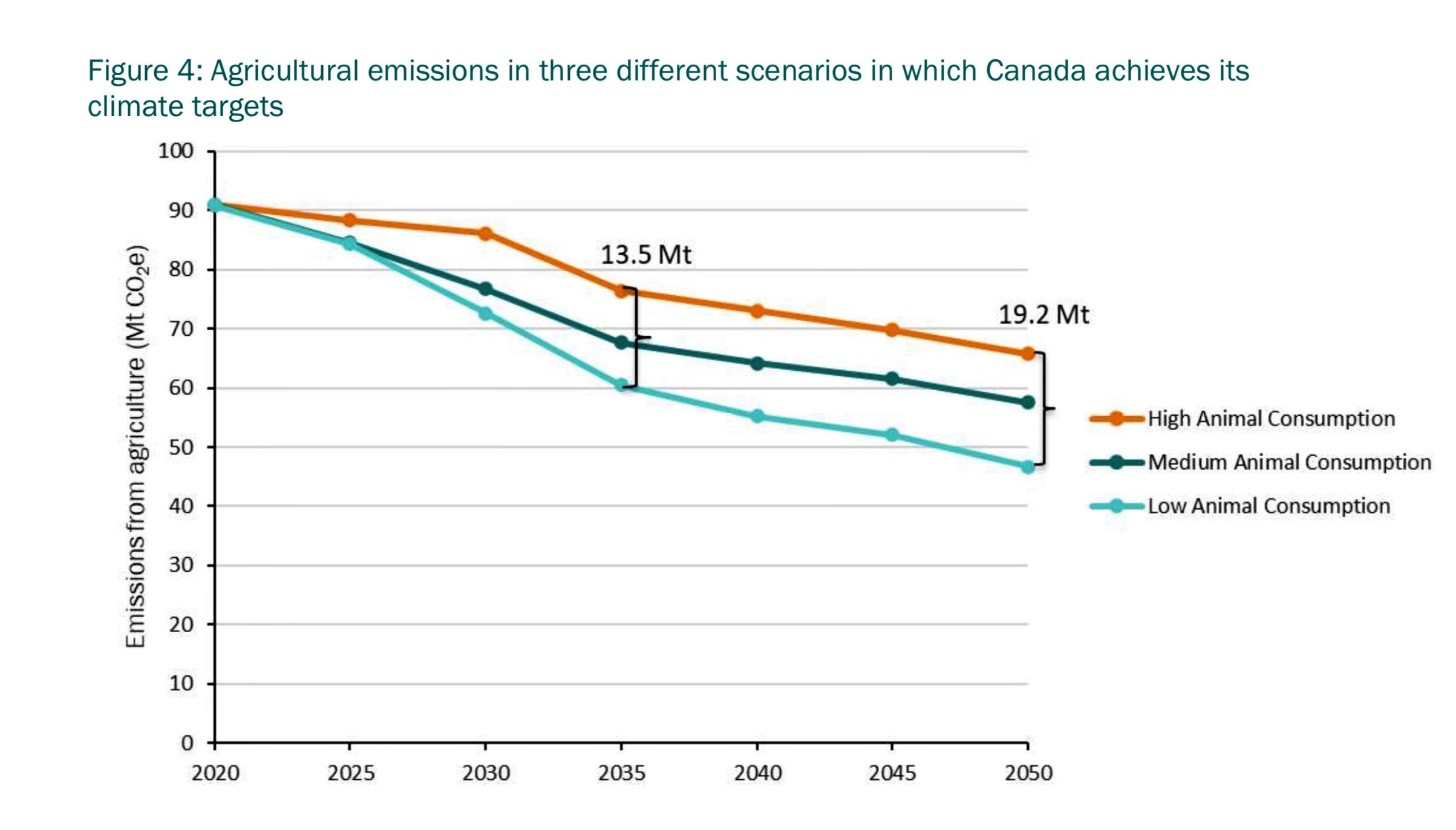There’s new evidence that the choices Canadians make in the grocery aisle, in our kitchens and at the dinner table can make a significant difference in helping Canada meet its climate targets to reduce greenhouse gas (GHG) emissions.
A new study says that reducing the amount of meat and dairy we consume and shifting towards a low-meat/plant-rich diet is a powerful tool in the fight against climate change with multiple long-term benefits.
The federal government has pledged to reduce Canada's emissions 40-45 per cent below 2005 levels by 2030 and reach net-zero by 2050. Like many other nations, Canada’s Emissions Reduction Plan (ERP) includes a wide range of changes focusing mostly on our energy and transportation systems, but these measures alone will not get the job done, leaving a nine mega-tonne gap.
One important reason for this, confirmed by numerous scientific studies, is that nations around the world cannot meet the Paris climate targets (1.5-2 degrees C) or national climate targets without addressing GHG emissions from agriculture.
Since 12% of Canada’s GHG emissions come from agriculture and the food system (66% of which comes from animal agriculture), it offers a huge opportunity for climate action that can play a significant part in helping meet climate goals.
The new report, Animal-sourced food consumption and Canada’s emissions targets by World Animal Protection Canada (WAPC) and Navius Research, shows that if Canadians reduced their consumption of animal foods by 50 percent from current levels, this would lead to 13.5 Mt fewer emissions in 2030 under Canada’s current policies.
“Reducing animal food consumption and implementing ERP policies could be enough to fill the nine-Mt gap and help Canada surpass its target,” according to Lynn Kavanagh, farming campaign manager at WAPC, writing in the National Observer.
Source: Navius Research
The research modelled three scenarios for animal food consumption by 2050: high (reduction of 20%); medium (50%) and low (80%). By moving to the low consumption scenario, agriculture emissions will be 16% lower in 2030 and 29% lower in 2050 relative to the high animal consumption scenario.
Source: Navius Research
The major components of GHG emissions from agriculture include methane from cattle and nitrous oxide from fertilizers and animal manure. Since most fertilizers are used to grow feed crops for animals, the chart above shows that this is also an important part of the climate challenge and opportunity. Feed and fertilizer for animal agriculture added an additional 16% of emissions attributed to animal agriculture in 2020.
WAPC says there is a tremendous opportunity to help people transition to climate friendly diets and that plant-based foods are a major business opportunity for farmers and food companies.
The impacts of meat consumption and animal agriculture on our climate are why WAPC launched its Plan Meatless Better campaign this summer which asks users a few questions about their eating habits and offers a personalized, customized plan and a set of recipes tailored to their preferences.
Meeting national climate targets is a multi-variable equation involving both systemic changes (reducing reliance on oil and gas, increasing use of alternative energy sources for power generation, more EVs, solar and wind power and more) and individual action. Lowering our consumption of meat and dairy products and moving to a plant-rich diet brings climate, health, biodiversity and environmental benefits. And it’s something we can help ourselves to right in our own homes.



